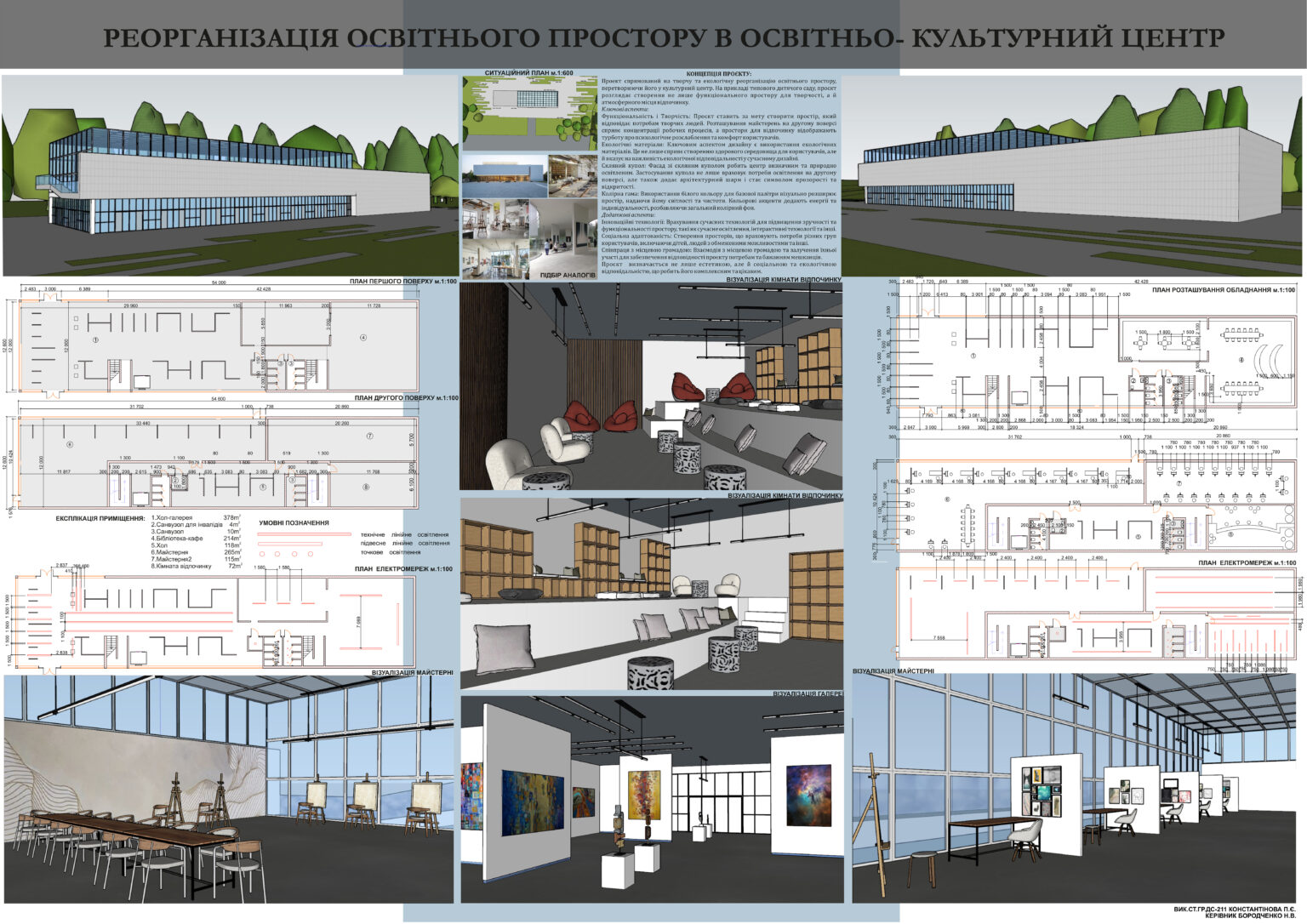
Konstantinova Polina
REORGANIZATION OF THE TYPICAL SOVIET EDUCATIONAL SPACE INTO A MODERN CULTURAL CENTER
The project “Reorganization of the Typical Soviet Educational Space into a Modern Cultural Center” aims to creatively and ecologically transform outdated educational spaces into vibrant hubs of culture and creativity. Focusing on a typical Soviet-era children’s daycare as a case study, the project seeks to create not only functional spaces for creativity but also atmospheric relaxation areas.
Key Aspects:
Functionality and Creativity: The project aims to create a space that caters to the needs of creative individuals. By placing workshops on the second floor, it encourages concentration during work processes, while relaxation areas reflect a concern for the psychological relaxation and comfort of users.
Ecological Materials: A key aspect of the design is the use of ecological materials. This not only promotes a healthy environment for users but also emphasizes the importance of environmental responsibility in modern design.
Glass Dome: A facade with a glass dome makes the center iconic and naturally lit. The use of a dome not only meets the lighting needs on the second floor but also adds architectural charm and becomes a symbol of transparency and openness.
Color Palette: Using white as the base color palette visually expands the space, giving it brightness and cleanliness. Colorful accents add energy and individuality, diluting the overall color background.
Additional Aspects:
Innovative Technologies: Incorporating modern technologies to enhance the convenience and functionality of the space, such as advanced lighting, interactive technologies, and others.
Social Adaptability: Creating spaces that address the needs of different user groups, including children, people with disabilities, and others.
Community Collaboration: Collaborating with the local community and engaging their participation to ensure that the project meets the needs and desires of residents.
Conclusion:
The project is defined not only by aesthetics but also by social and environmental responsibility, making it comprehensive and engaging. By repurposing Soviet-era educational spaces into modern cultural centers, the project aims to foster creativity, ecological consciousness, and community cohesion.